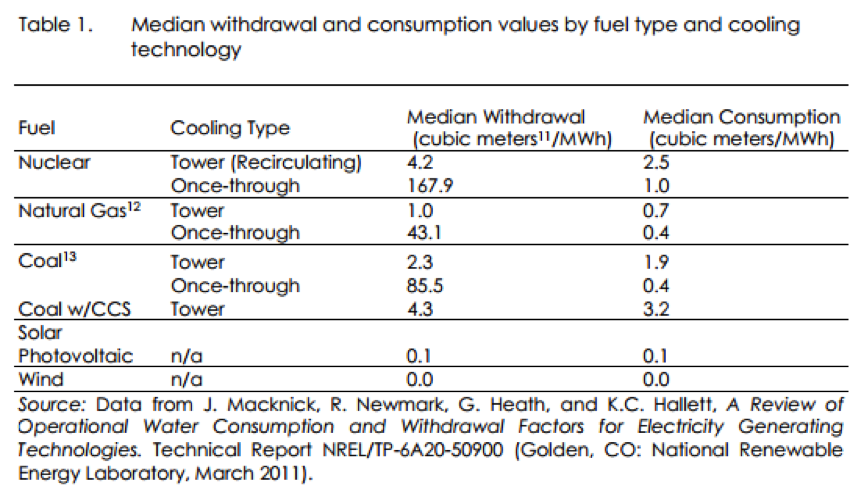A report released last month by the CNA Corporation think-tank has detailed the massive reductions in water usage that solar PV and other renewable energy technologies enable.
Often disregarded as a selling point for solar, its water usage rate per megawatt‑hour (MWh) of generated electricity is dwarfed by that used in the generation of coal‑fired, gas‑fired and nuclear‑powered electricity.
It is reported that between 4–168 tonnes of water is needed for the generation of 1MWh of electricity with nuclear, 1–43 tonnes of water with natural gas plants and 2–86 tonnes with coal‑fired stations, our most common source of electricity. The large variation in water usage is determined by whether or not the cooling water is recirculated during operation or if it is simply used once and flushed out.
This water is eventually sent back into the surrounding environment, but as long as it is in use at the power plant it cannot be allocated for other purposes such as agriculture or manufacturing.
These figures are based on case studies in the USA, however they remain indicative of our own figures here in Australia as they are specific to particular generator types.
To put these figures into perspective, just one ‘average’ Sydney household consuming 20kWh per day of coal-fired electricity (using ‘once-through’ cooling) requires the equivalent of more than 2,800x standard 600mL bottles of water to be made available for the production of that electricity.
Sourced from ‘A Clash of Competing Necessities: Water Adequacy and Electric Reliability in China, India, France and Texas’.
In contrast, solar PV was determined to use 0.1 tonnes per generated MWh of electricity, used only to clean off dirt. This data reveals that, at their best, non‑renewable generators still require up to ten times more water usage than solar PV. At their worst, nuclear power plants can use more than 1,500 times as much fresh water!
When examined from this standpoint, it’s no wonder that China and India—the world’s two most populous nations—are investing heavily into renewable energy technologies. By implementing wide‑scale PV and wind generators, they will be able to contribute to the electricity needs of their combined 2.6 billion citizens without further endangering their own water security.
For a nation that has just recently come out of a prolonged drought, water security and conservation should be right at the top of Australia’s priority list. Parties from both sides of the renewables debate surely share common ground in regards to the importance of preserving our water resources in the face of a growing population.
The idea that adopting renewable energy technologies such as solar PV is beneficial to the environment is far from a revelation. For years, the majority of scientists have warned of the catastrophic effects that climate change will have worldwide. But this report highlights the immediate threat that water shortages pose on electricity security, exacerbated by the continued use of thermal generators such as coal, gas and nuclear to meet our electricity needs.
The solution seems clear. The implementation of renewable energy technologies will be better for us as a society, not just in the long term but also in ways that will have an immediate positive impact on our current generation. My hope is that we don’t have to wait until the swimming pools of policy makers run dry before we tackle this issue.
Top Image Credit: CNA
© 2014 Solar Choice Pty Ltd
